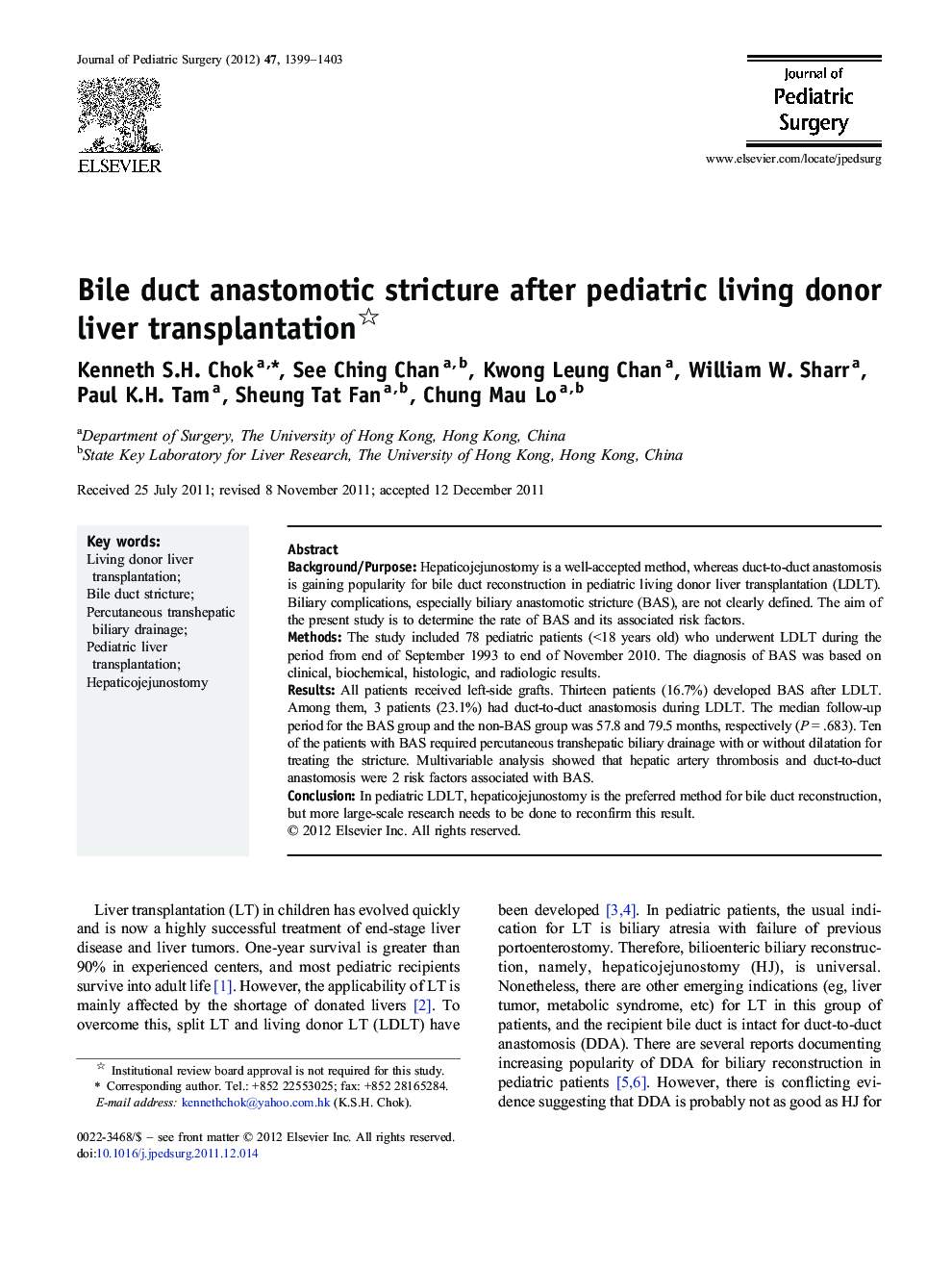| کد مقاله | کد نشریه | سال انتشار | مقاله انگلیسی | نسخه تمام متن |
|---|---|---|---|---|
| 4156821 | 1273781 | 2012 | 5 صفحه PDF | دانلود رایگان |

Background/PurposeHepaticojejunostomy is a well-accepted method, whereas duct-to-duct anastomosis is gaining popularity for bile duct reconstruction in pediatric living donor liver transplantation (LDLT). Biliary complications, especially biliary anastomotic stricture (BAS), are not clearly defined. The aim of the present study is to determine the rate of BAS and its associated risk factors.MethodsThe study included 78 pediatric patients (<18 years old) who underwent LDLT during the period from end of September 1993 to end of November 2010. The diagnosis of BAS was based on clinical, biochemical, histologic, and radiologic results.ResultsAll patients received left-side grafts. Thirteen patients (16.7%) developed BAS after LDLT. Among them, 3 patients (23.1%) had duct-to-duct anastomosis during LDLT. The median follow-up period for the BAS group and the non-BAS group was 57.8 and 79.5 months, respectively (P = .683). Ten of the patients with BAS required percutaneous transhepatic biliary drainage with or without dilatation for treating the stricture. Multivariable analysis showed that hepatic artery thrombosis and duct-to-duct anastomosis were 2 risk factors associated with BAS.ConclusionIn pediatric LDLT, hepaticojejunostomy is the preferred method for bile duct reconstruction, but more large-scale research needs to be done to reconfirm this result.
Journal: Journal of Pediatric Surgery - Volume 47, Issue 7, July 2012, Pages 1399–1403